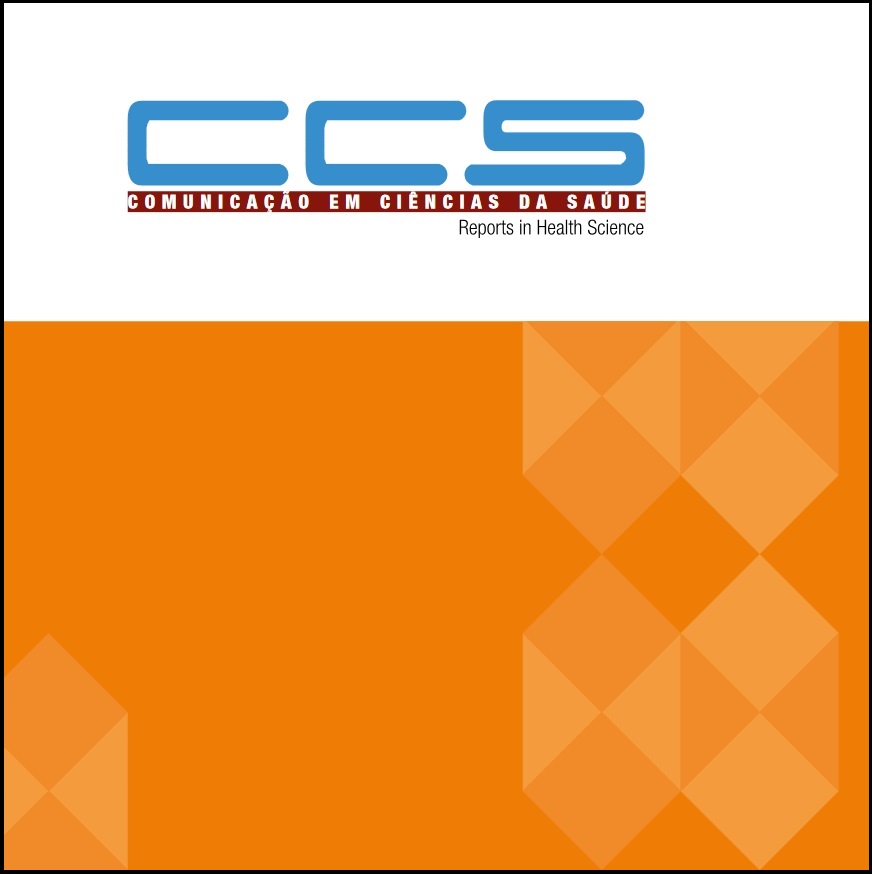Pre-pandemic factors for SARS-COV-2 in Latin America and its impact on the Mortality Rate
DOI:
https://doi.org/10.51723/ccs.v32i03.974Keywords:
Coronavirus Infectious, Latin America, Mortality, Public Health AdministrationAbstract
Introduction: COVID-19 has affected countries in an unequal way. From the analysis of the current situation in Latin America, we sought to measure the association between factors intrinsic to the pandemic and the mortality rate.
Objective: to analyze the relationship between pre-pandemic factors and intrinsic factors to the pandemic that contributed to the spread of COVID-19 in Latin America.
Method: descriptive and cross-sectional study. An analysis of pre-pandemic socioeconomic and health data from the countries that make up Latin America was carried out. Then, the correlation of these indicators with a mortality rate by COVID-19 was performed.
Results: among the 11 indicators analyzed, only two had a strong correlation with the mortality rate: "number of confirmed cases of COVID-19" and "total number of deaths from COVID-19". there wasn't a strong correlation with the other socioeconomic factors analyzed
Conclusion: pre-pandemic socioeconomic and health factors did not impact or were moderately related to the mortality rate.
.
Downloads
References
Organização Mundial da Saúde. WHO Director-General 's Opening Remarks at the Media Briefing on COVID-19. Disponível em: https://www.who.int/dg/speeches/detail/who-director-general-s-opening-remarks-at-the-media-briefing-on-covid-19---11-march-2020 /acesso em 23 de fevereiro de 2021.
Xiang Z, Xudong M, Na H, Longxiang S, Yingying M, Jie H et al. Forecasting the worldwide spread of COVID-19 based on logistic model and SEIR mode. medRxiv [online]. March 2020. Disponível em: https://doi.org/10.1101/2020.03.26.20044289
Hamzah FA, Lau CH, Nazri H, Ligot DV, Lee G, Tan CL et al. CoronaTracker: worldwide COVID-19 outbreak data analysis and prediction. Bull World Health Organ. 2020 March 2020 19. Available from: https://www.who.int/bulletin/online_first/20-255695.pdf
Johns Hopkins Coronavirus Resource Center. COVID-19 Map. 2020. Disponível em: https://coronavirus.jhu.edu/map.html/acesso em 23 de agosto de 2020.
Lowy Institute: COVID Performance Index. Low Inst. 2021. Available from: https://interactives.lowyinstitute.org/features/covid-performance/#methodology/acesso em: 10 de fevereiro de 2021.
Johns Hopkins University. COVID-19 Dashboard by the Center for Systems Science and Engineering (CSSE). 2020. Disponível em: https://coronavirus.jhu.edu/map.html/acesso em 07 de março de 2021.
Bernal-Meza R. Multilateralismo e unilateralismo na política mundial: América Latina frente à ordem mundial em transição. Rev Bras Pol Int. 2005; 48, 5-23. Disponível em: https://doi.org/10.1590/S0034-73292005000100001
CEPAL. Salud y economía: una convergencia sostenible en América Latina y retomar la senda hacia el desarrollo necesaria para enfrentar el COVID-19 y el Caribe. 2020. CEPAL, 27. Disponível em: https://www.cepal.org/es/publicaciones/45840-salud-economia-convergencia-necesaria-enfrentar-covid-19-retomar-la-senda /acesso em 19 de agosto de 2021.
Garcia PJ, Alarcón A, Bayer A, Buss P, Guerra G, Ribeiro H, et al. COVID-19 Response in Latin America. The Am Jou Trop Med and Hyg. 2020, 103(5), 1765-1772. Available from https://www.ajtmh.org/view/journals/tpmd/103/5/article-p1765.xml
Brasil. Instituto Brasileiro de Geografia e Estatística. Países. Disponível em: https://paises.ibge.gov.br/#/ acesso em 10 de fevereiro de 2021.
The World Bank. World Bank national accounts data, and OECD National Accounts data files. 2021. Available from: https://data.worldbank.org/indicator/NY.GDP.MKTP.CD /access 2021 February 19
Organizações das Nações Unidas. Relatório do Desenvolvimento Humano 2019. Disponível em: http://hdr.undp.org/sites/default/files/hdr_2019_pt.pdf /acesso em 10 de agosto de 2021.
UNICEF. Every Child Life - report. 2018. Disponível em: https://weshare.unicef.org/Package/2AMZIF2P99KK /acesso em 19 de fevereiro de 2021.
CEPAL. Observatório de Igualdade de Gênero da América Latina e do Caribe. 2017. Disponível em: https://oig.cepal.org/pt/indicadores/mortalidade-materna /acesso em 19 de fevereiro de 2021.
World Health Organization. Coronavirus (COVID-19) Dashboard. 2020. Available from: https://covid19.who.int /access 2020 November 5.
Mukaka MM. Statistics corner: A guide to appropriate use of correlation coefficient in medical research. Malawi Med J. 2012 Sep; 24(3): 69-71. Available from: https://www.ncbi.nlm.nih.gov/pmc/articles/PMC3576830/
Buss PM, Filho AP. A saúde e seus determinantes sociais. Physis. 2007; 77-93. Disponível em: https://doi.org/10.1590/S0103-73312007000100006
Carrapato P, Correia P, Garcia B. Determinante da saúde no Brasil: a procura da equidade na saúde. Sau e Soc [online]. 2017, v. 26, n. 3. Disponível em: https://doi.org/10.1590/S0104-12902017170304
Proaño CR. On the Macroeconomic and Social Impact of the Coronavirus Pandemic in Latin America and the Developing World. Interec. 2020; 55, 159–162. Disponível em: https://doi.org/10.1007/s10272-020-0889-x
Cruz ER, Grin EJ, Sanabria-Pulido P, Cravacuore D, Orellana A. The Transaction Costs of Government Responses to the COVID-19 Emergency in Latin America. Public Adm Rev. 2020; 80, 683–695. Disponível em: https://doi.org/10.1111/puar.13259
Litewka SG, Heitman E. Latin American healthcare systems in times of pandemic. Devel World Bioe. 2020; 20, 69–73. https://doi.org/10.1111/dewb.12262
Castro MC, Kim S, Barberia L, Ribeiro AF, Gurzenda S, Ribeiro KB, Abbott E, Blossom J, Rache B, Singer BH. Spatiotemporal pattern of COVID-19 spread in Brazil. Science. 2021 May 21;372 (6544): 821-826. Disponível em: https:// 10.1126/science.abh1558.
Ferigato S, Fernandez M, Amorim M, Ambrogi I, Fernandes LMM, Pacheco R. The Brazilian Government's mistakes in responding to the COVID-19 pandemic. Lancet. 2020 Nov 21;396 (10263): 1636. Disponível em: https://10.1016/S0140-6736(20)32164-4.
World Health Organization. Transmission of SARS-CoV-2: implications for infection prevention precautions: scientific brief. 2020 July 9. Available from: https://www.who.int/news-room/commentaries/detail/transmission-of-sars-cov-2-implications-for-infection-prevention-precautions
United States of America. Centers for Disease Control and Prevention. .Scientific Brief: SARS-Cov-2 Transmission. 2020. Available from: https://www.cdc.gov/coronavirus/2019-ncov/science/science-briefs/sars-cov-2-transmission.html /access 10 august 2021.
Organização Mundial da Saúde. COVID 19 Strategy Update. 2020. Disponível em: https://www.who.int/docs/default-source/coronaviruse/covid-strategy-update-14april2020.pdf?sfvrsn=29da3ba0_19 /acesso em 21 de fevereiro de 2021.
Jasanoff S, Kennedy H, Hilgartner S, Rayzberg M. Comparative Covid Response: Crisis, Knowledge, Politics. 2021. Available from: https://www.ingsa.org/covidtag/covid-19-commentary/jasanoff-schmidt/
World Economic Forum. Latin America is the World’s Most Unequal Region: Here’s How to Fix it. 2016. Disponível em: https://www.weforum.org/agenda/2016/01/inequality-is-getting-worse-in-latin-america-here-s-how-to-fix-it /acesso em 21 de fevereiro de 2020.
Hecksher M. Mortalidade por COVID-19 e a queda do emprego no Brasil e no Mundo. Instituto de Pesquisa Econômica Aplicada (IPEA). 2021. Disponível em: https://www.ipea.gov.br/portal/index.php?option=com_content&view=article&id=37981&Itemid=457
Taylor L. How Latin America is fighting covid-19, for better and worse. The BMJ. 2020; 370. https://doi.org/10.1136/bmj.m3319
Downloads
Published
Issue
Section
License
Declaro para os devidos fins que o artigo que estou submetendo representa um trabalho original e nunca foi publicado total ou parcialmente, e que se alguma de suas partes foi publicada possuímos autorização expressa para a publicação no periódico Comunicação em Ciências da Saúde (CCS). Esse artigo não foi enviado a outro periódico e não o será enquanto estiver sendo considerada sua publicação; caso venha a ser aceito não será publicado em outro periódico; e não contém material difamatório ou ilegal sob nenhuma forma, não viola a intimidade de terceiros, nem infringe direitos protegidos.
Eu e demais autores desse trabalho certificamos por meio desta declaração que:
- Concordamos com as normas editoriais e com o processo de revisão da CCS;
- Aceitamos a responsabilidade pela conduta desse estudo e pela análise e interpretação dos dados;
- Cooperaremos, sempre que solicitado, na obtenção e fornecimento de dados sobre os quais o manuscrito está baseado, para exame dos avaliadores;
- Não estão sendo omitidos quaisquer ligações ou acordos de financiamento entre os autores e companhias ou pessoas que possam ter interesse no material abordado no artigo;
- Não estão sendo excluídos ou omitidos deste artigo autores ou instituições participantes;
- Possuímos permissão para uso de figuras e tabelas publicadas em outras fontes;
- Possuímos permissão das pessoas e instituições citadas nos agradecimentos;
- O autor correspondente autoriza a publicação do endereço informado e e-mail do(s) autor(es) junto com o artigo;
- Assumimos a responsabilidade pela entrega de documentos verídicos;
- Autorizamos a publicação do referido artigo no periódico Comunicação em Ciências da Saúde, segundo critérios próprios e em número e volume a serem definidos pelo editor do periódico;
- Nos comprometemos a atender os prazos estipulados pelos editores do periódico Comunicação em Ciências da saúde;
- Estamos cientes de que a não manifestação no prazo de dois dias da revisão da diagramação, recebida por e-mail, será considerado aprovado para publicação.








